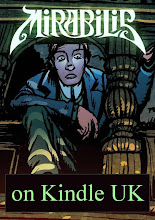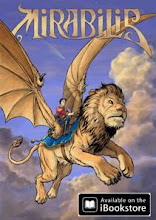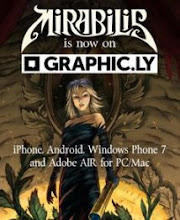 WHY GRAPHIC NOVELS AREN'T JUST "MOVIES ON A PAGE"
WHY GRAPHIC NOVELS AREN'T JUST "MOVIES ON A PAGE"It was 1989 and I was reading Hellblazer Annual #1 round at Paul Mason’s place. (Script by Delano, art by Talbot – we didn’t know how lucky we were.) “Guy’s seen a lot of Roeg movies,” I said.
Paul looked at the page. “Huh.” A week later he added, “I thought you were talking nonsense, but I just read an interview with Bryan Talbot where he says he’s heavily influenced by the films of Nic Roeg.”
Movies are my other big passion, so inevitably I spend a lot of time talking about my comics work – and storytelling in general – in terms of cinema. When I was posting about dialogue recently, most of the examples came from movies because I figure they’ll be more widely familiar than if I were to quote, say:
“I’d fall in love, or fall in lust, and at the height of my passion I would think, ‘So this is how it feels,’ and I would tie it up with pretty words.”Not so easy to place as a classic movie line, perhaps? Though there are some you can’t mistake:
“Soft on scum. Too young to know any better. Molly-coddled them. Let them live.”But comics are not movies and, as Alan Moore has pointed out, they can only suffer in the comparison:
“The use of cinematic techniques can advance the standards of comic art and writing, but if those techniques are seen as the highest point to which comics can aspire then the medium is condemned forever to be a poor relative of the motion picture industry. That isn’t good enough.”Comics both allow and demand that the writer supplies visual interest to a scene as well as the plain events and dialogue. It’s the same with movies, true - but comparisons are invidious, as we know. A movie has its own predetermined momentum (unless you choose to hit Rewind) whereas you’ll adjust your reading pace with a comic or graphic novel to fit how much each page gives you to take in. You can flip back easily to check on something earlier – in that sense, the experience is more like a prose novel than a movie. Yet it’s not prose either.
Take a scene where two characters are talking. In a movie you have to cut that right to the bone: the audience is impatient with waffle. In prose, you can let it go on for page after page, and not even bother with what the characters are doing. Eg:
"You have overlooked the curious incident of the dog in the night-time," he said.See, that’s too much detail for prose. Any decent editor would strike a red pen through all the dock leaf and stage direction stuff. But in a comic, that isn’t enough. You can have the talk, but you’ve got to keep interest in the scene in other ways too. It’s neither movies nor prose, nor a halfway house between the two. It’s a medium in its own right.
Watson stopped walking and stared at him. "The dog did nothing in the night-time."
Holmes speared a dock leaf with his cane. "That was the curious incident."
In Mirabilis #3, I planned a long sequence where Gus is telling Jack about the green comet. As exposition, even with the little frisson of uncertainty around Gus, it would lie there on the page like last Friday’s fish. Starting with the sense of unreliability Jack should be getting from Gus, I found a solution that injected surprise, action and danger into the scene. Serendipitously that gave me an opportunity to undercut all Gus’s wordy explanations with another bit of business which has Jack eavesdropping on part of a conversation between McNab and Estelle and hearing (he thinks) nothing good about himself. That accidental inspiration in fact gave me a title ("Outside Looking In") for the sequence when it appeared in Random House’s weekly David Fickling Comic. And as an extra bonus, the way the scene was set up provided an easier and more dramatic way to reveal Gargantua, the cause of that episode’s cliffhanger.
In prose, that same scene would have been so cluttered with different strands that it would have been impossible to follow. In a movie, it would have needed to be rewritten to reduce the expository dialogue while massively amping up the action beats.
Being a frustrated novelist or a wannabe scriptwriter are the wrong reasons for choosing to work in comics. A good storyteller can move between those media, but he or she will appreciate they call for different techniques. That’s why they call it an art.
























No comments:
Post a Comment